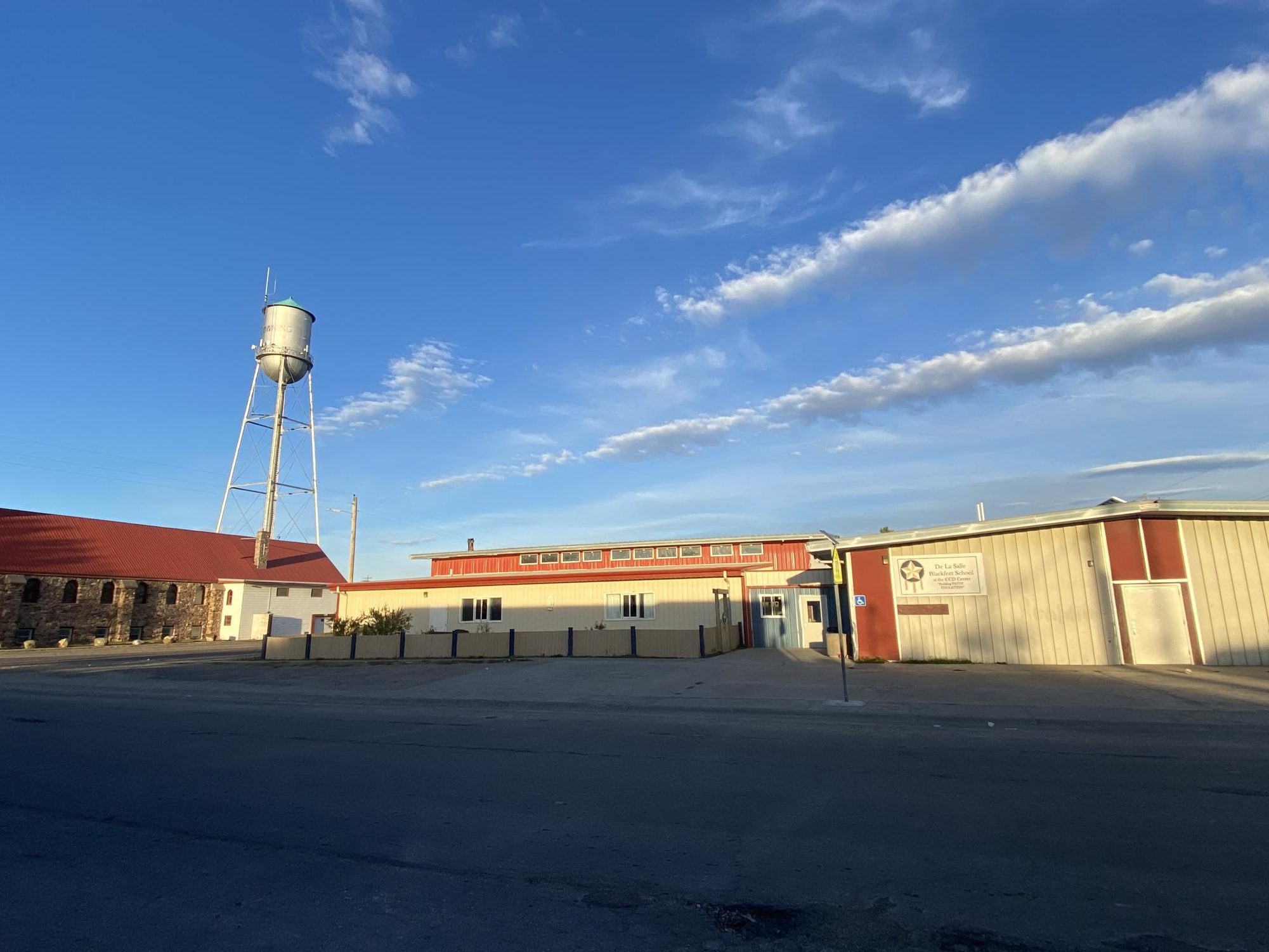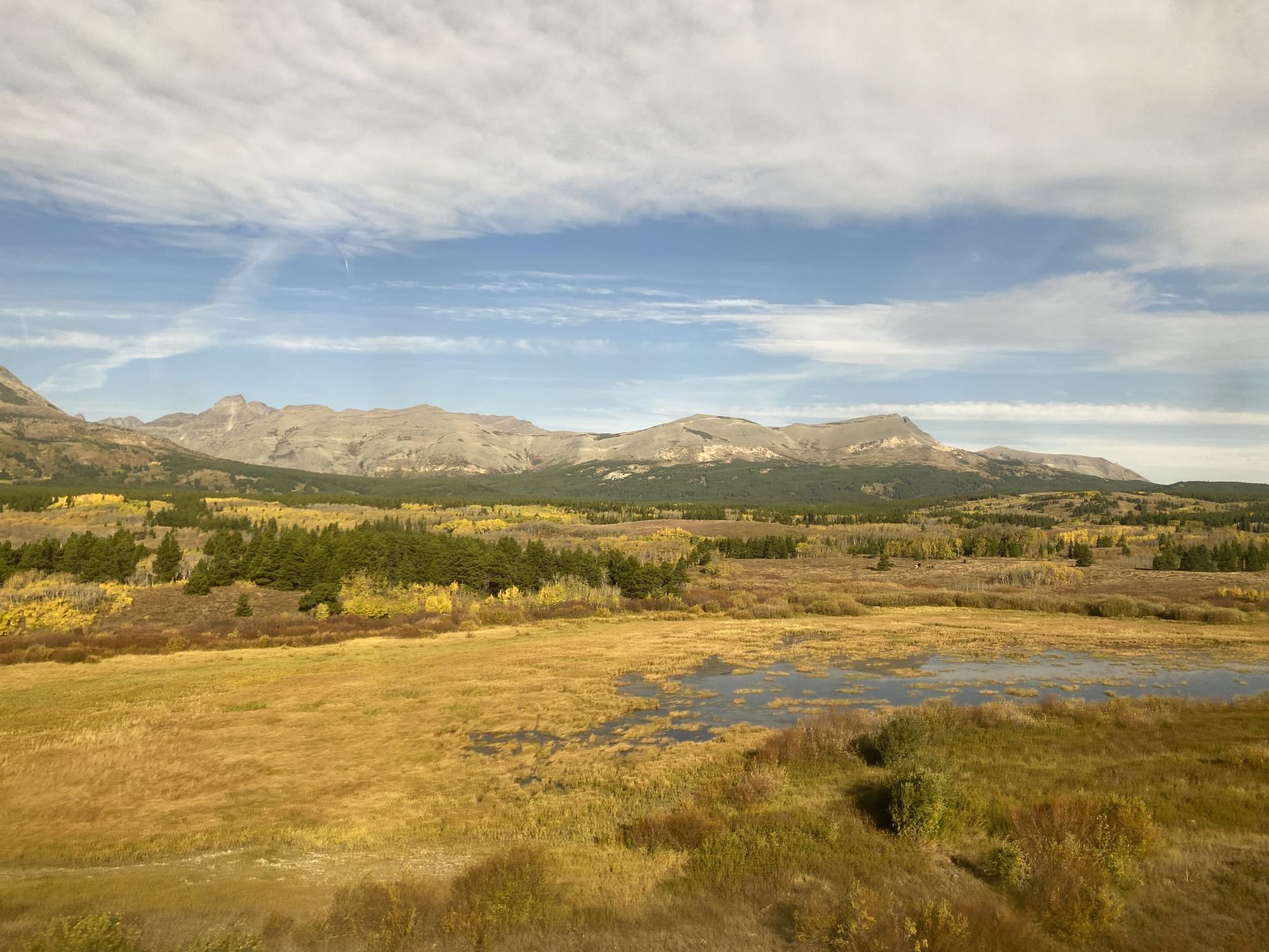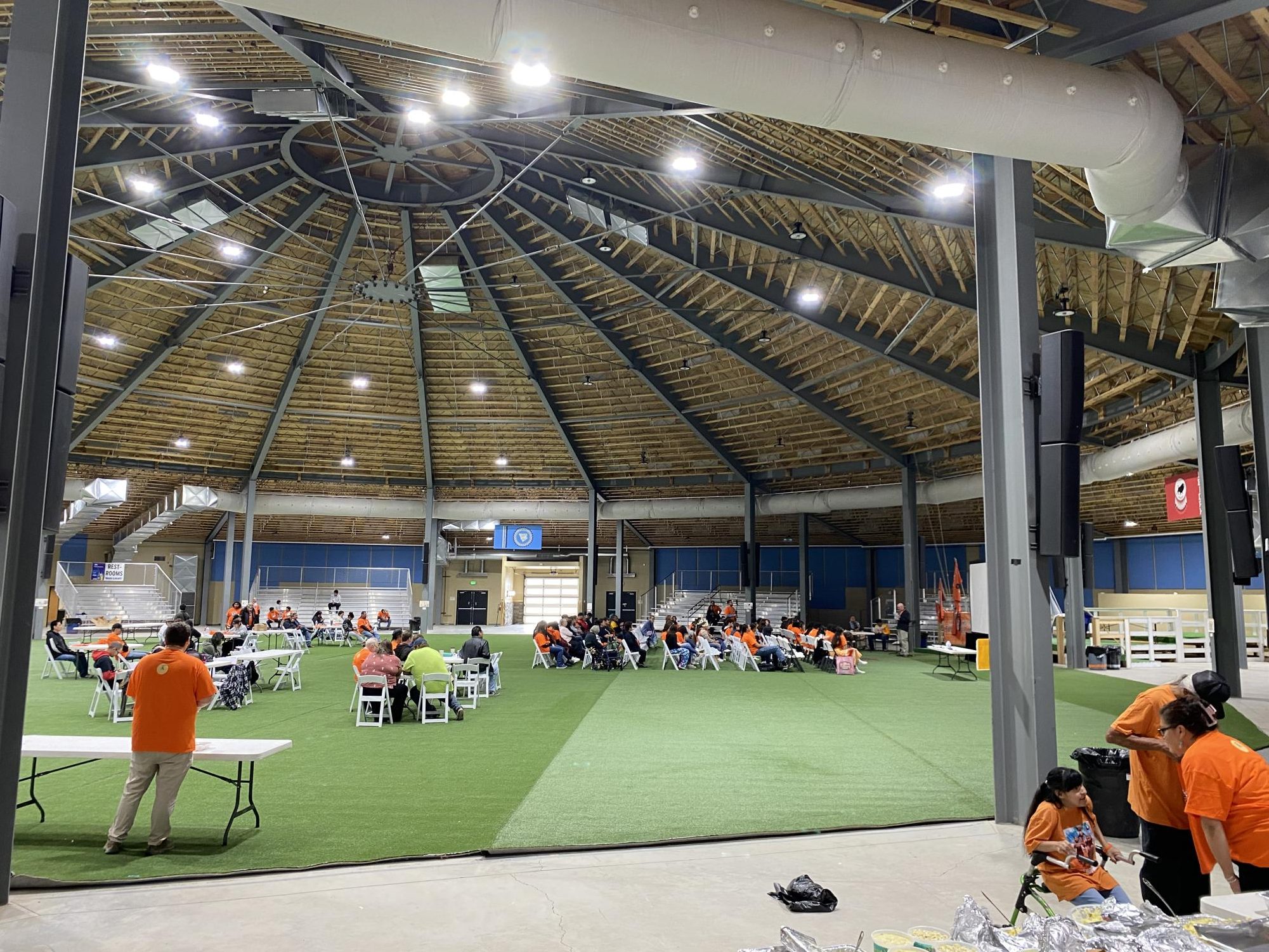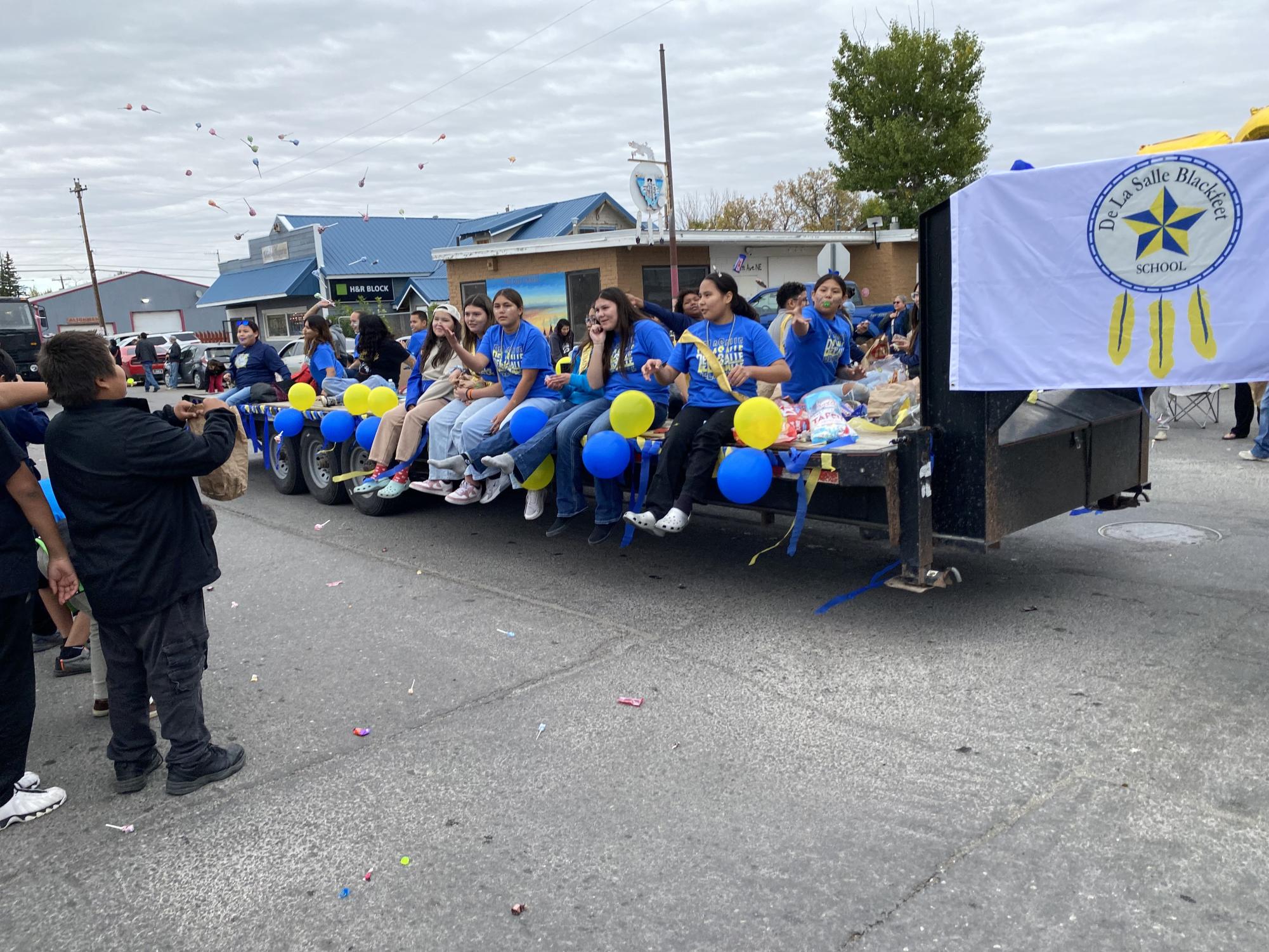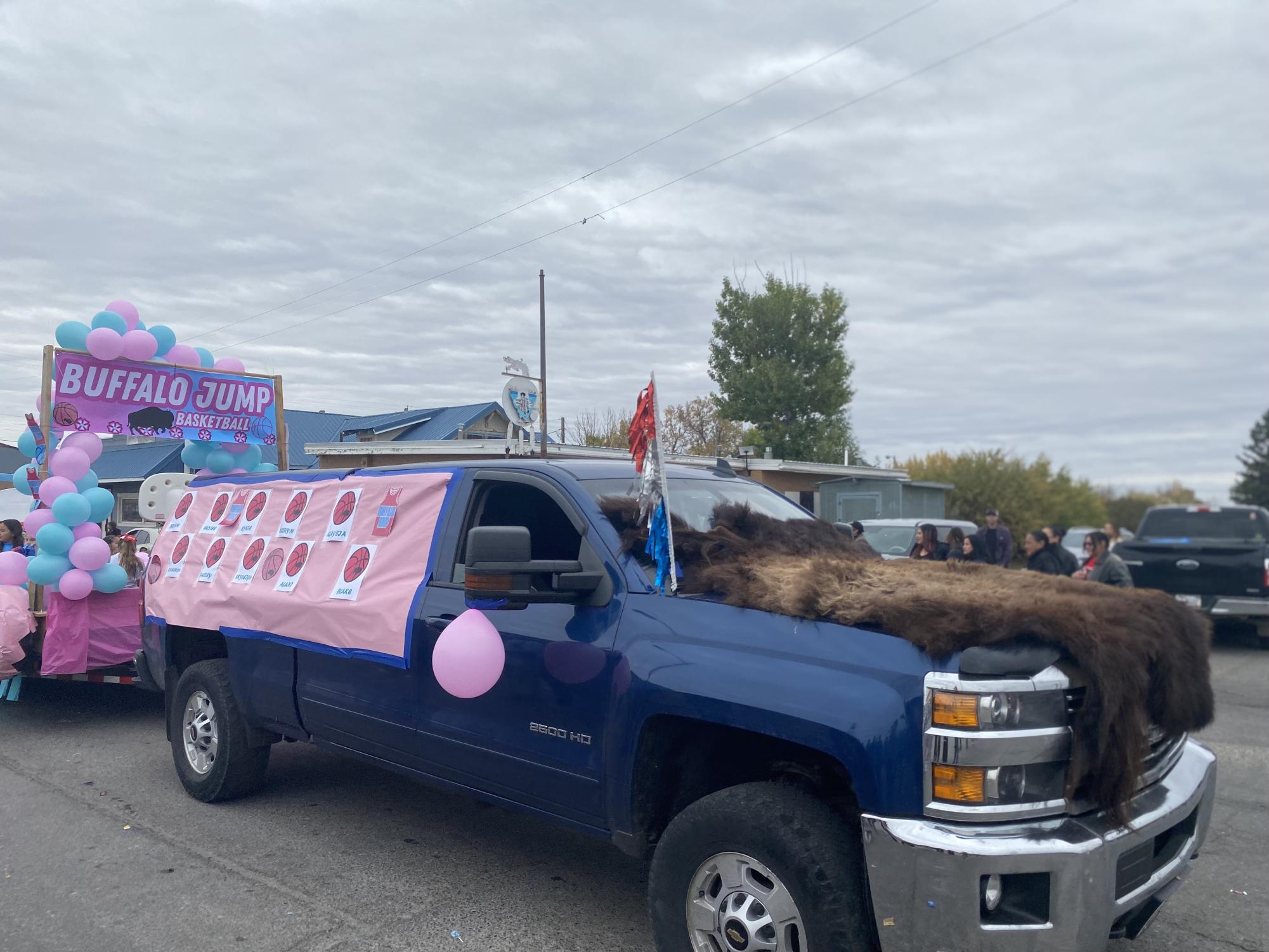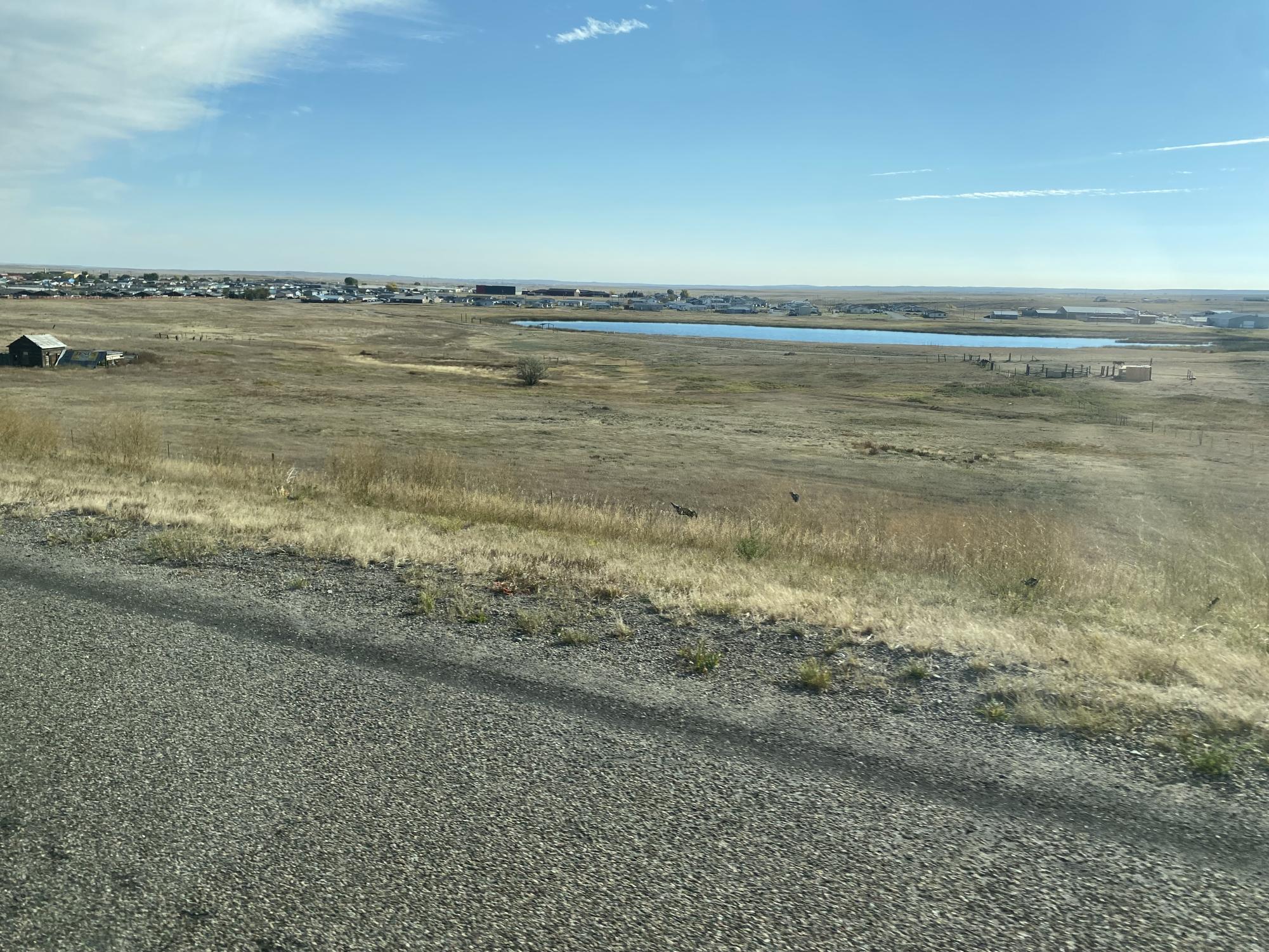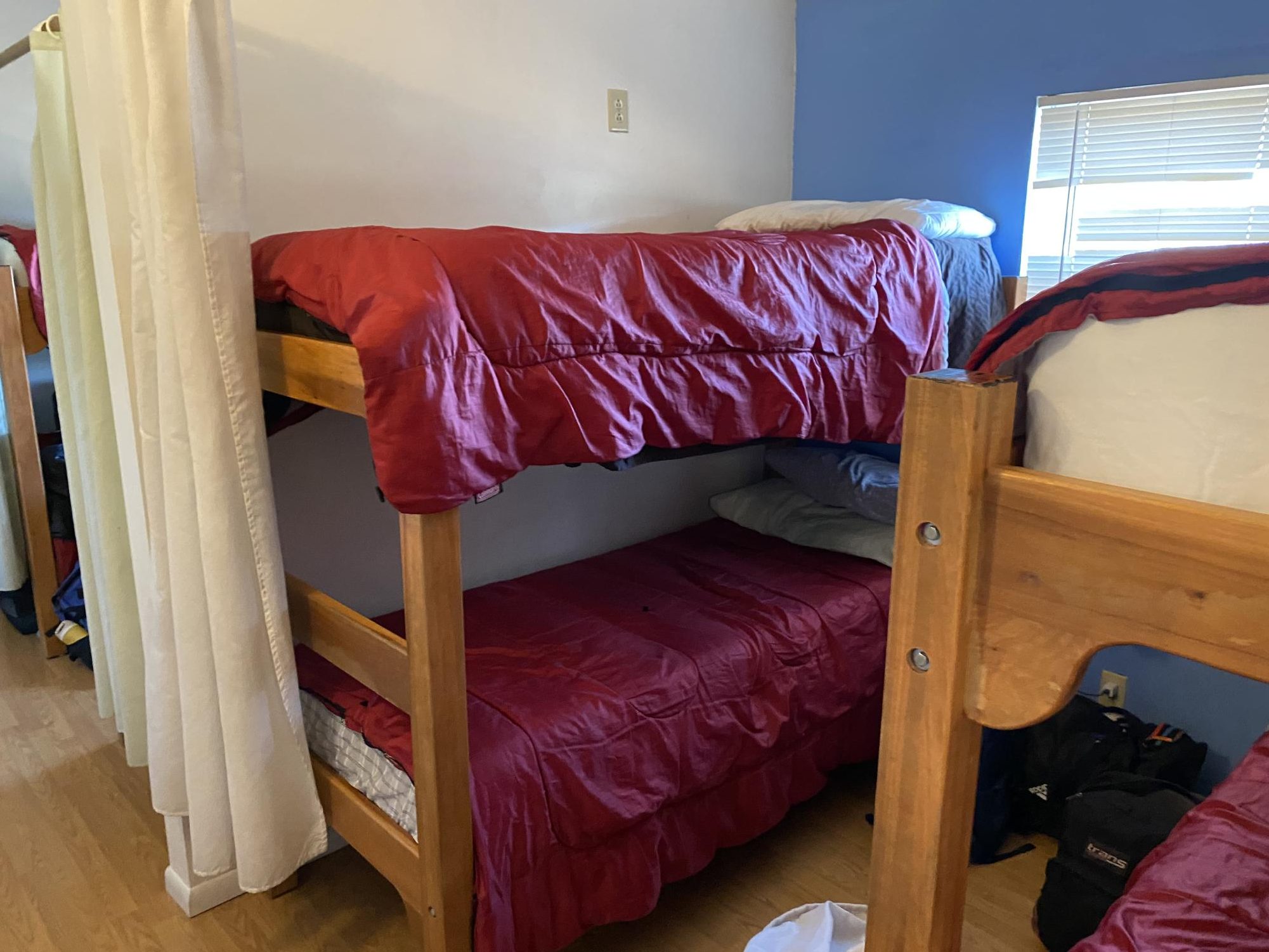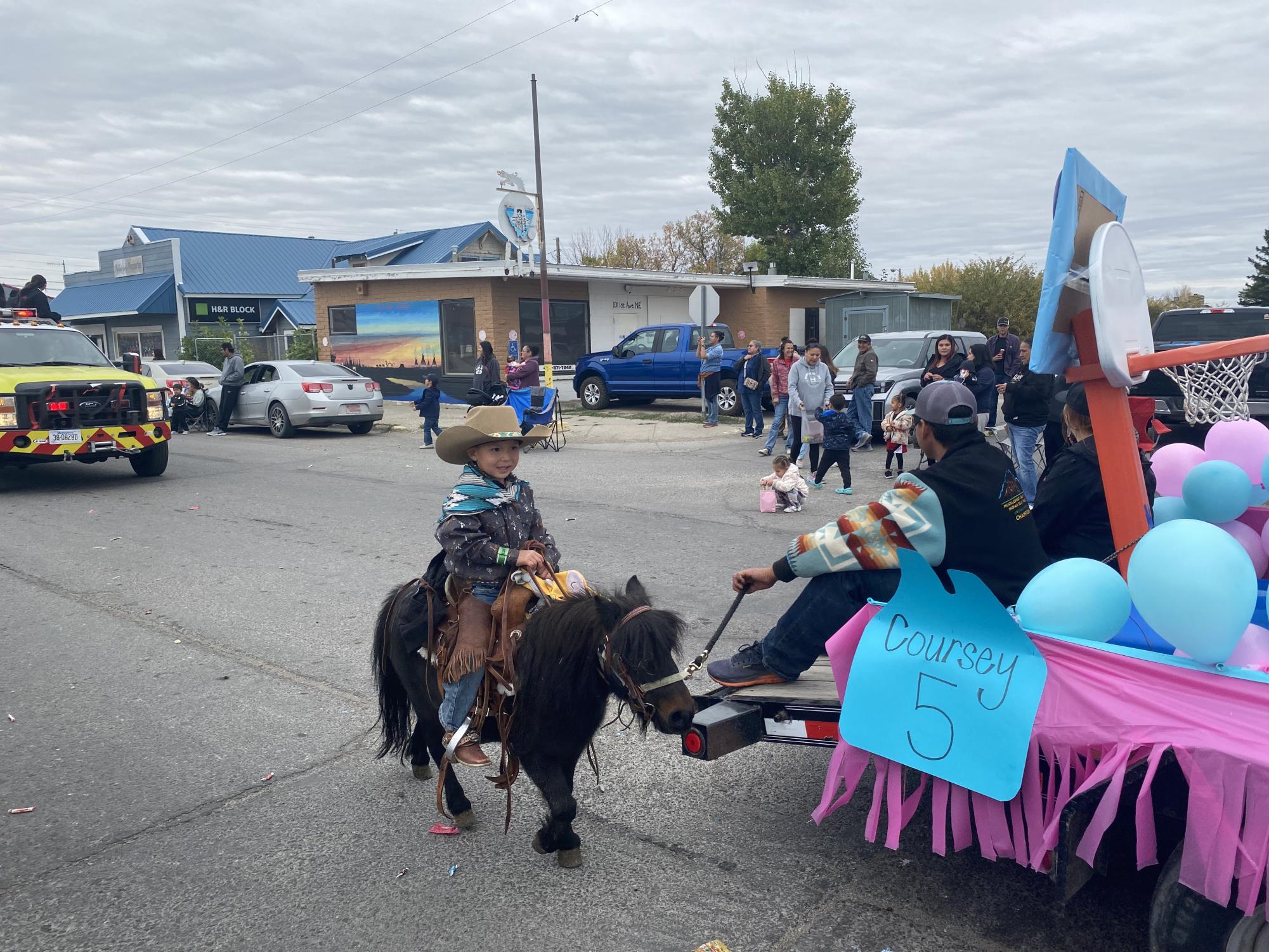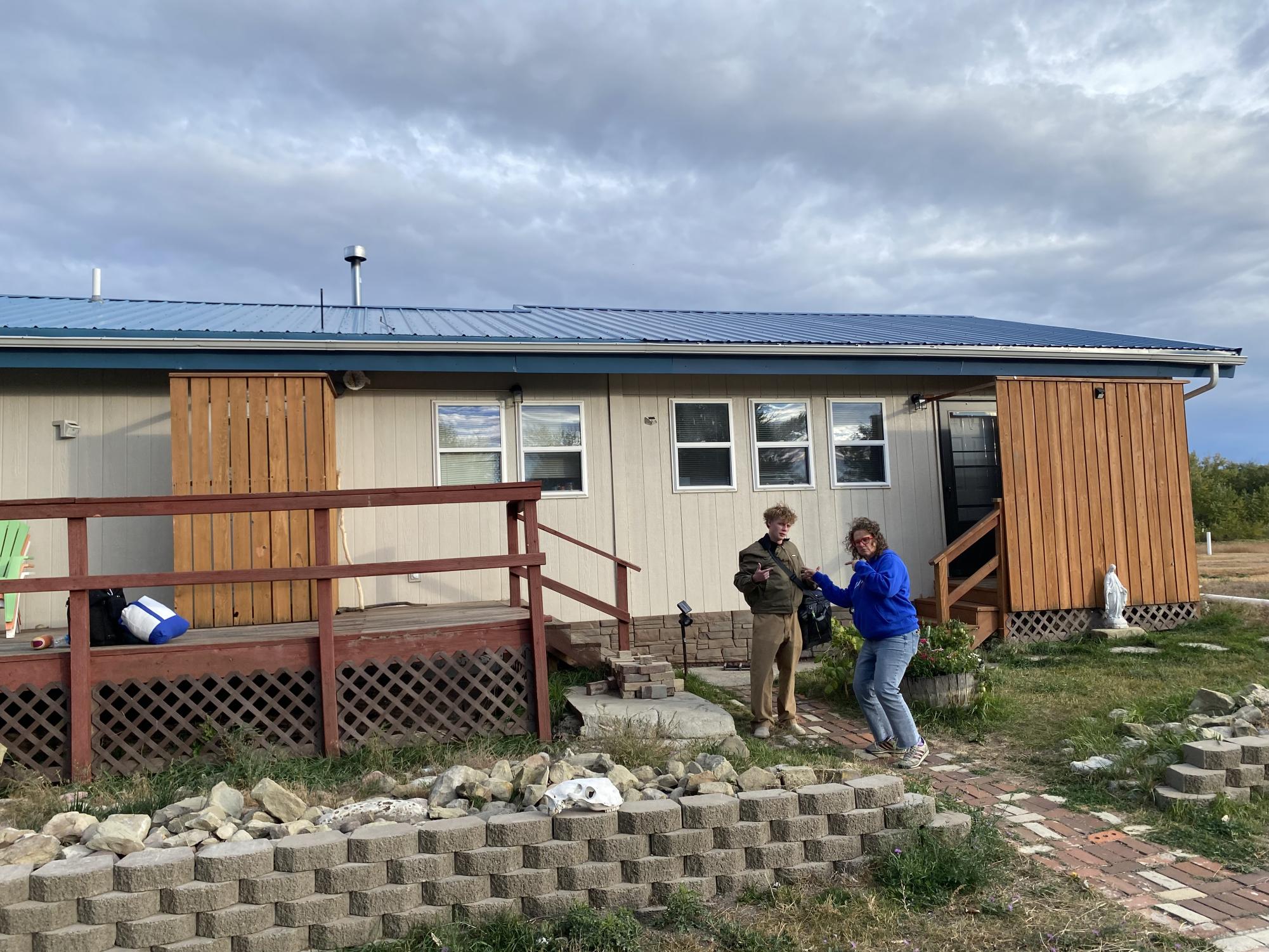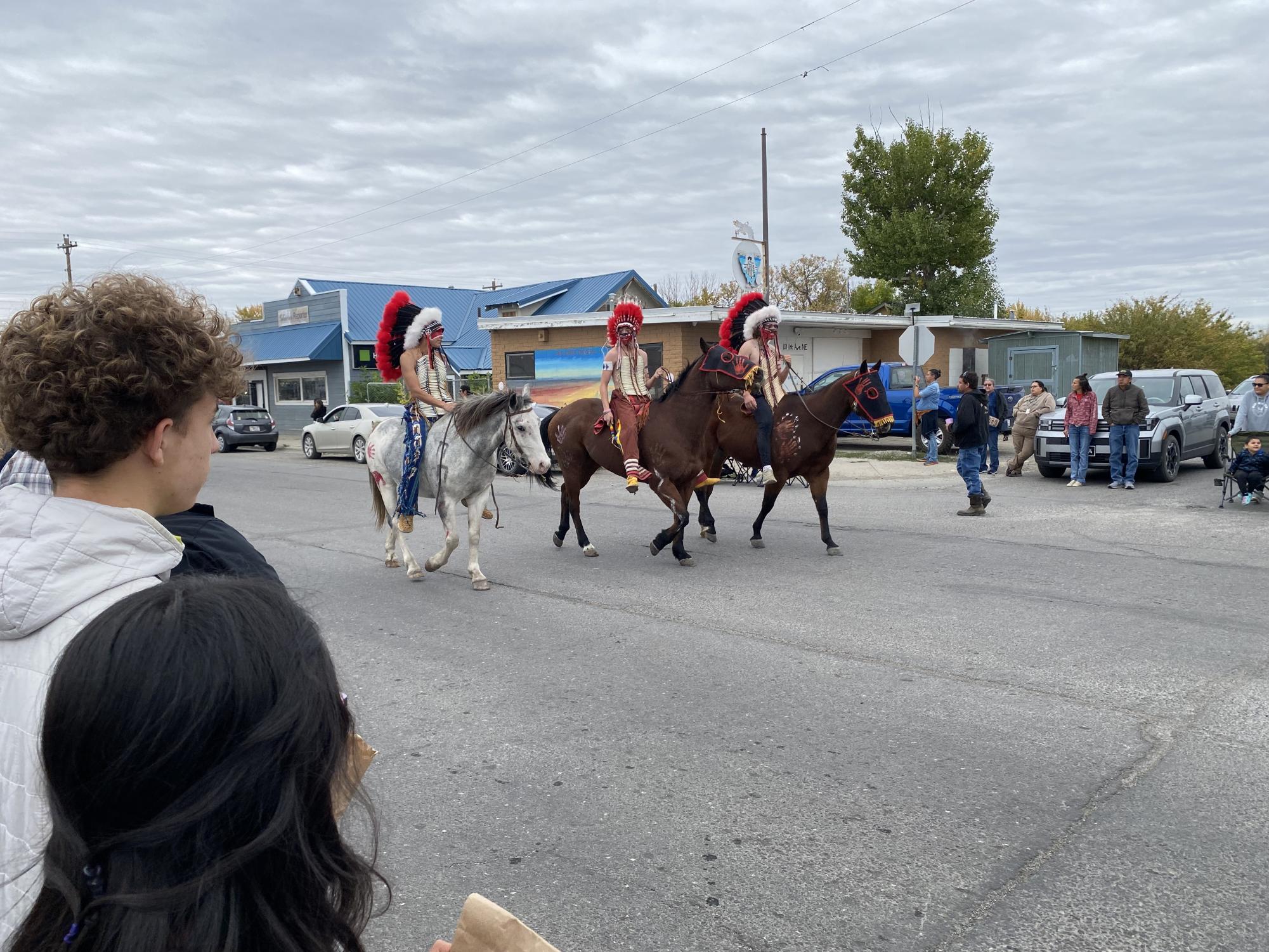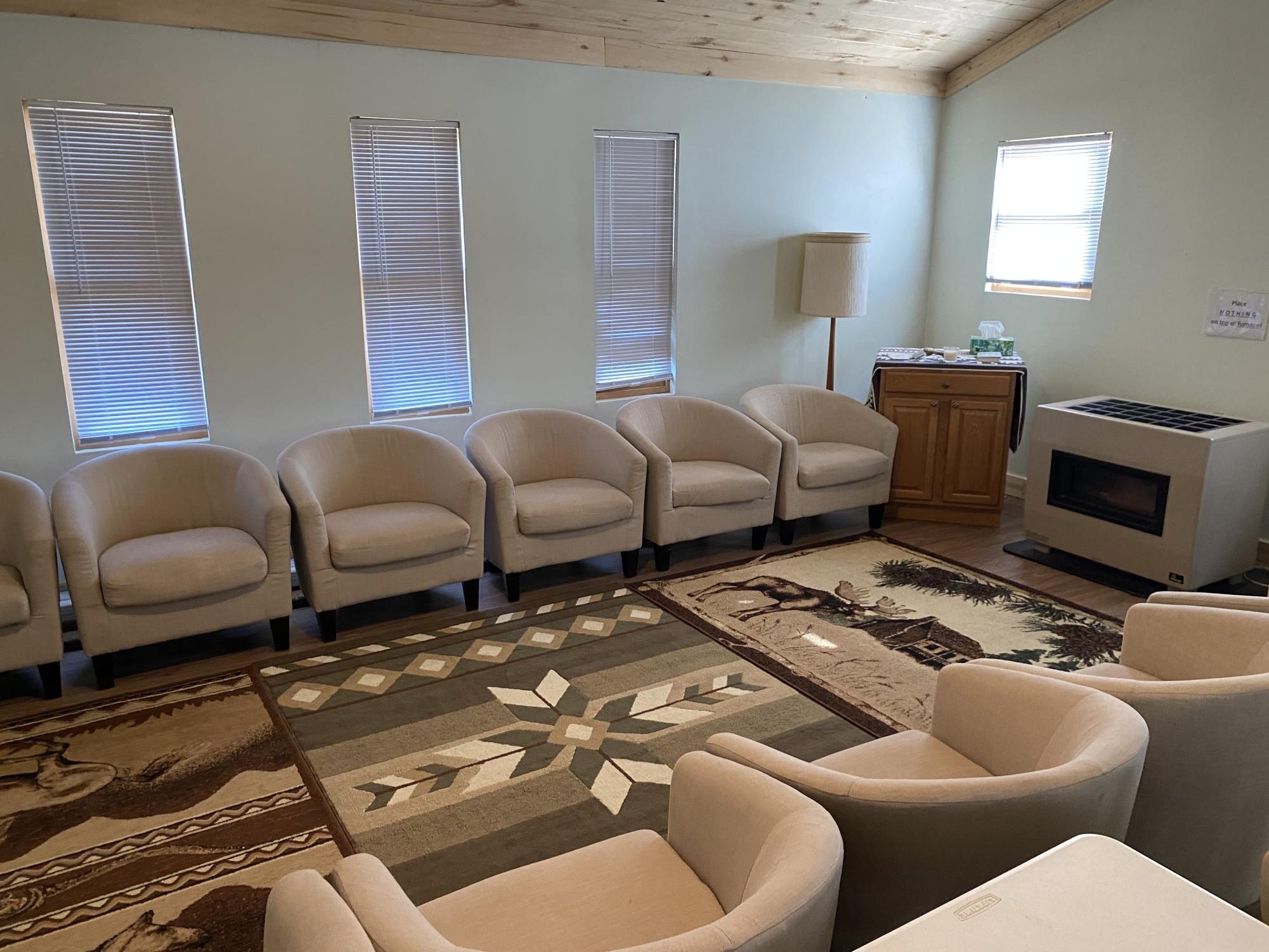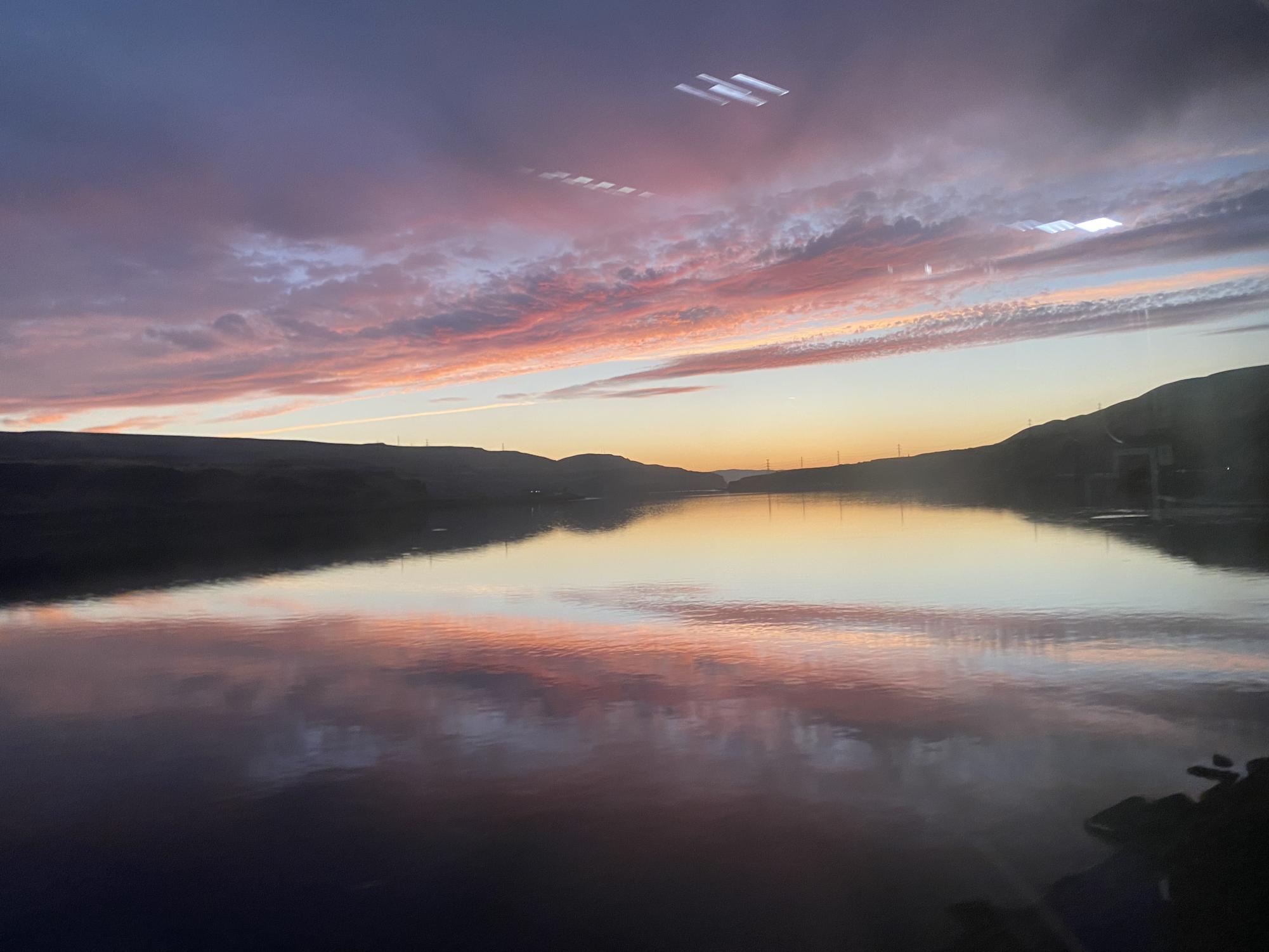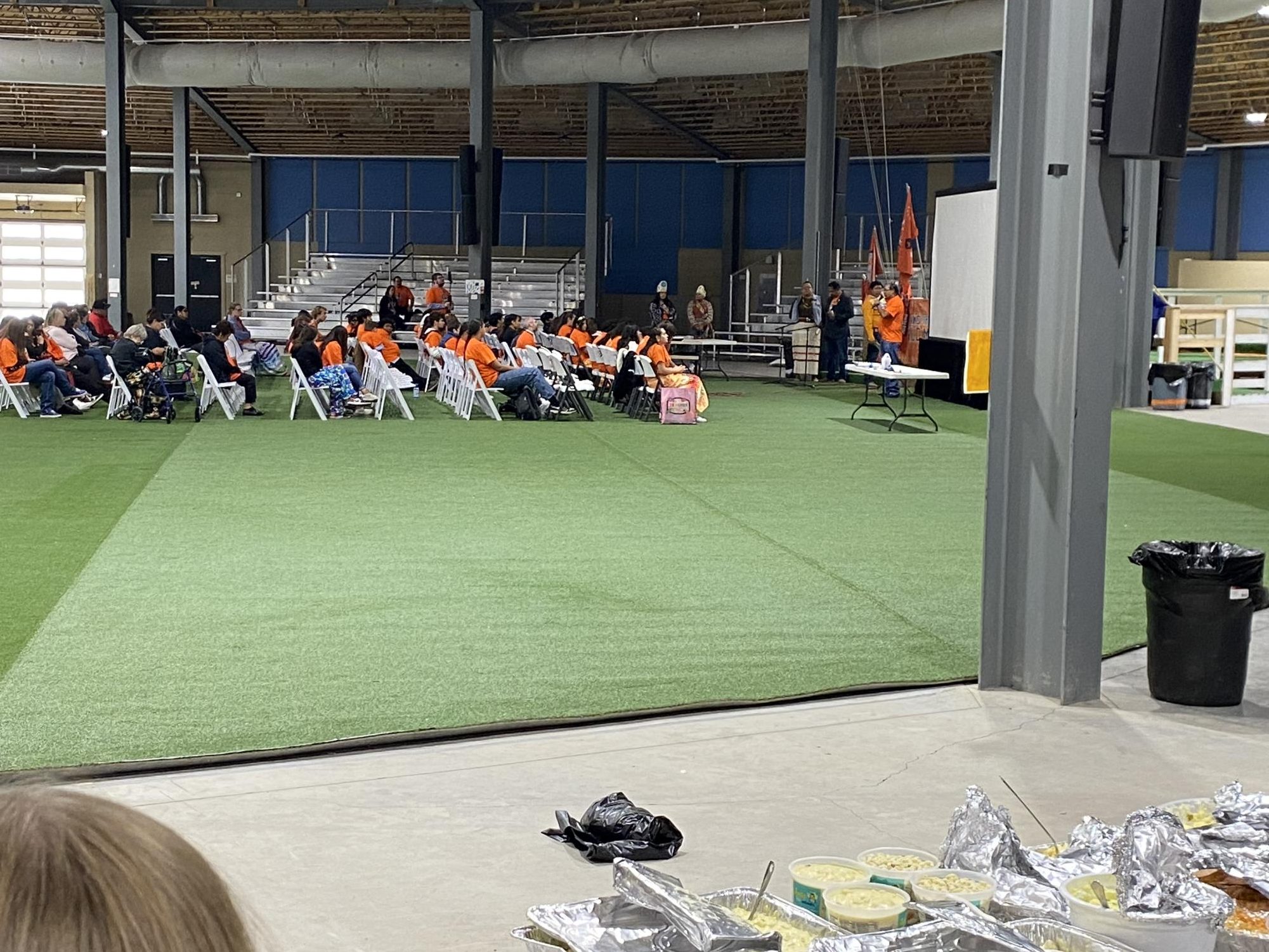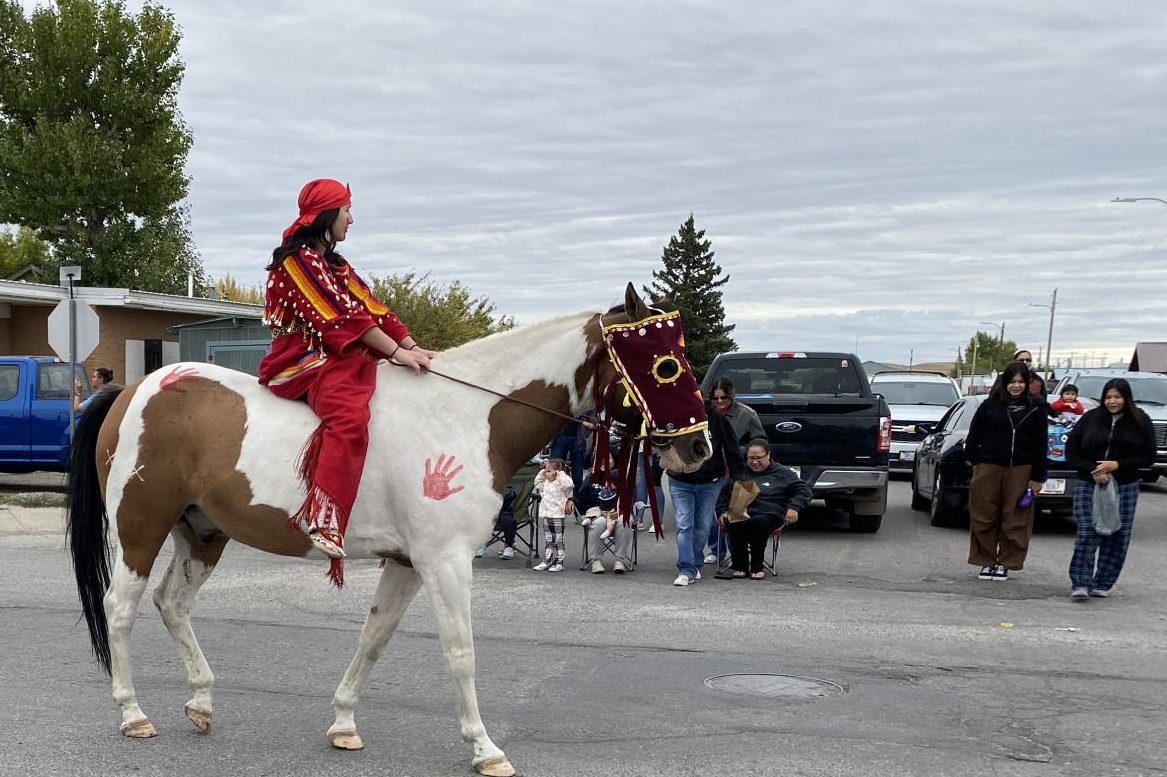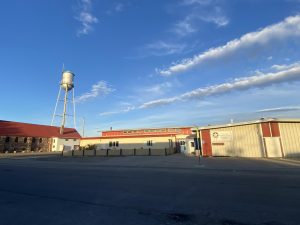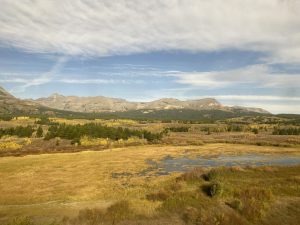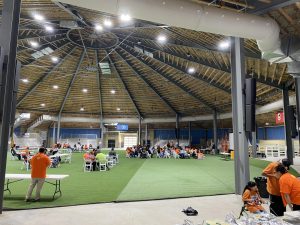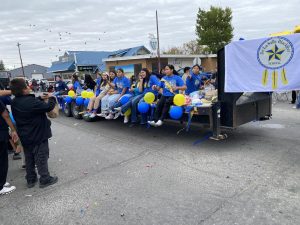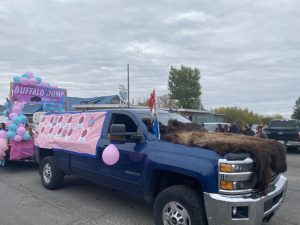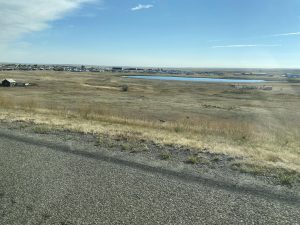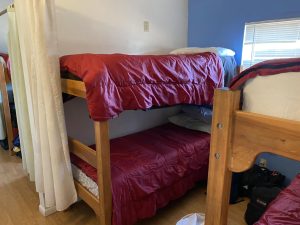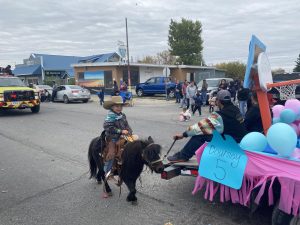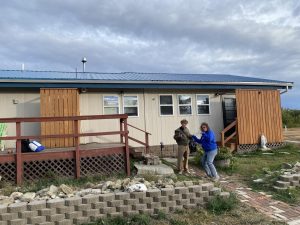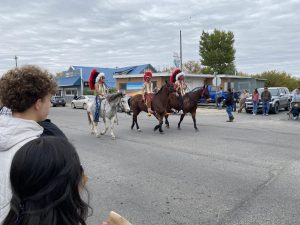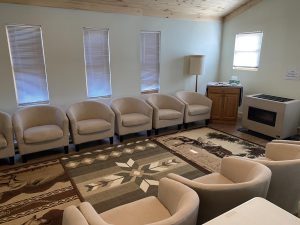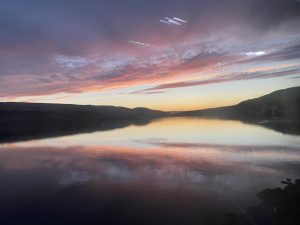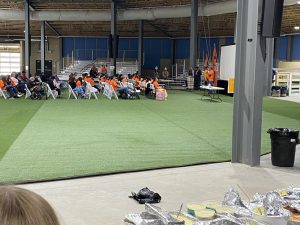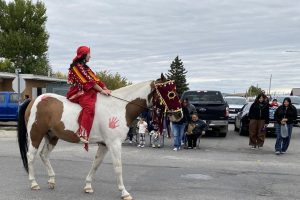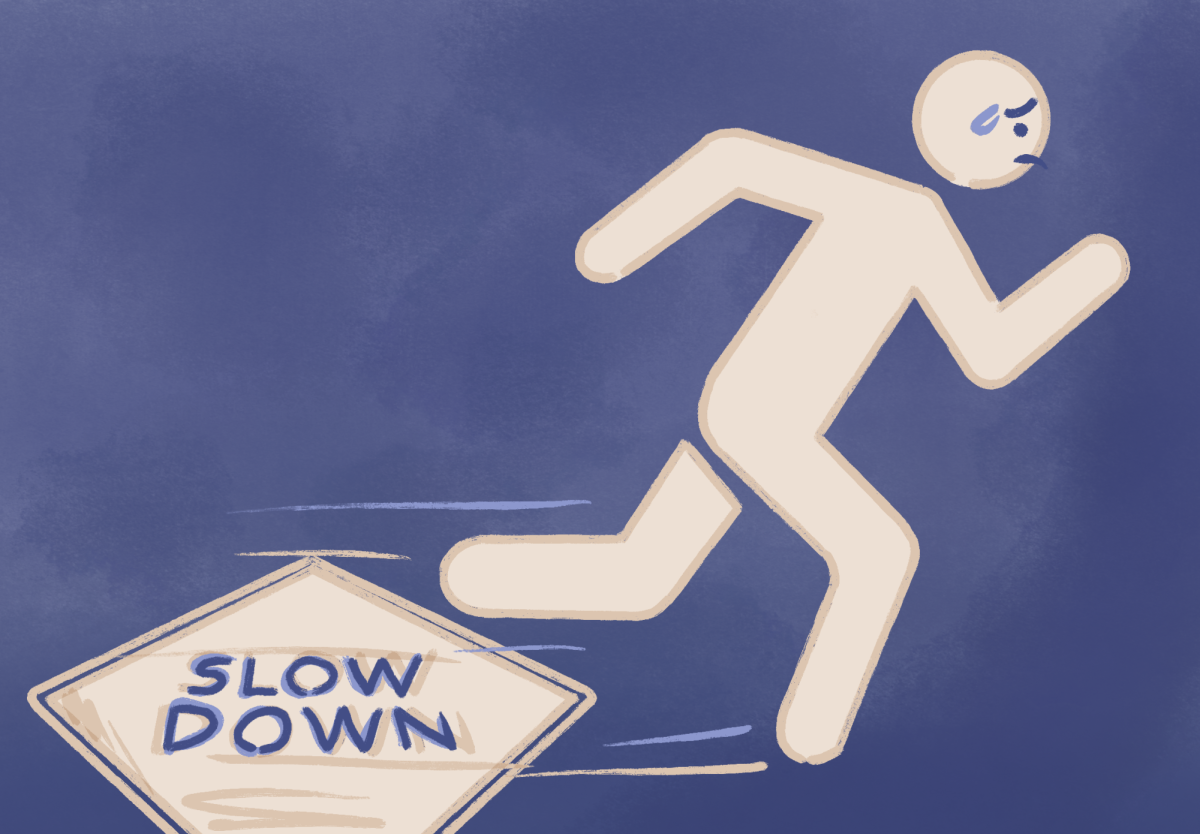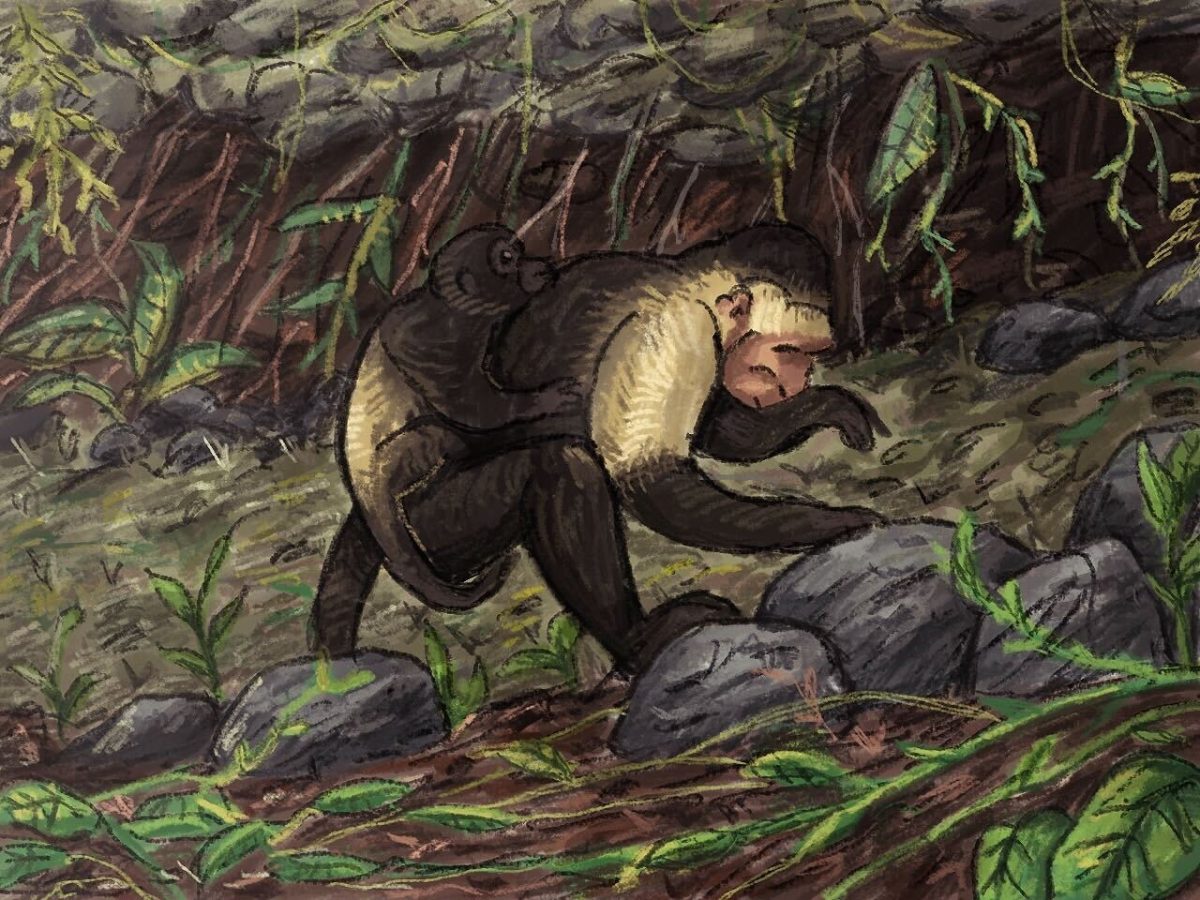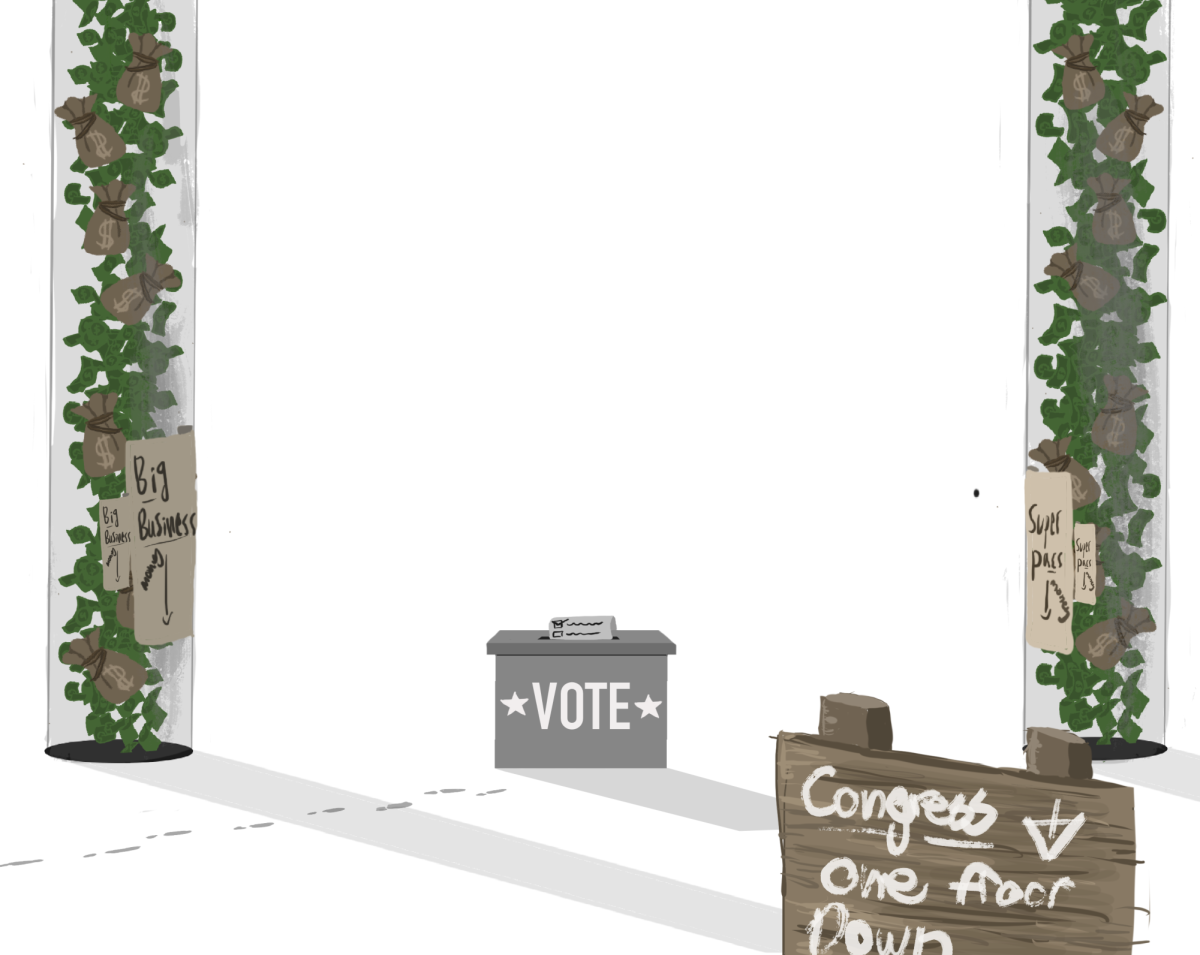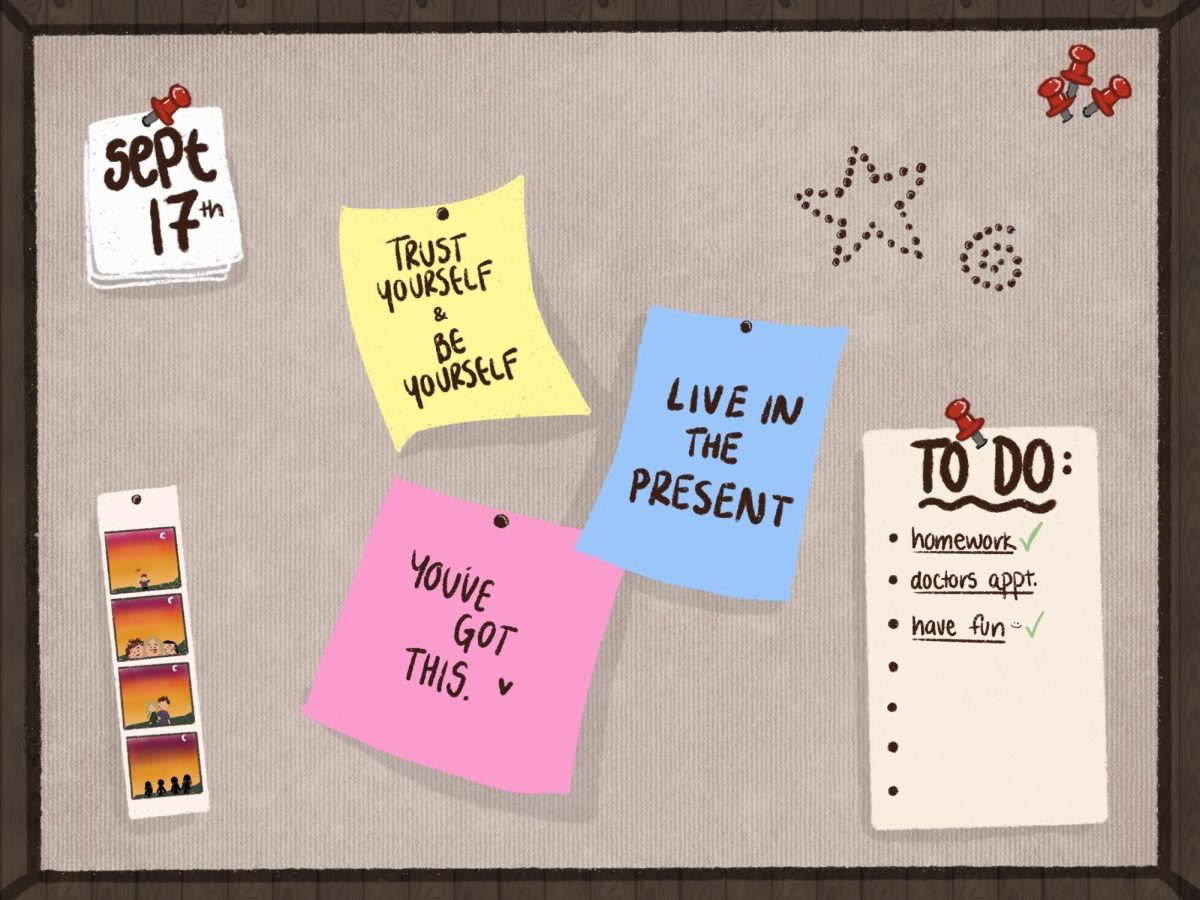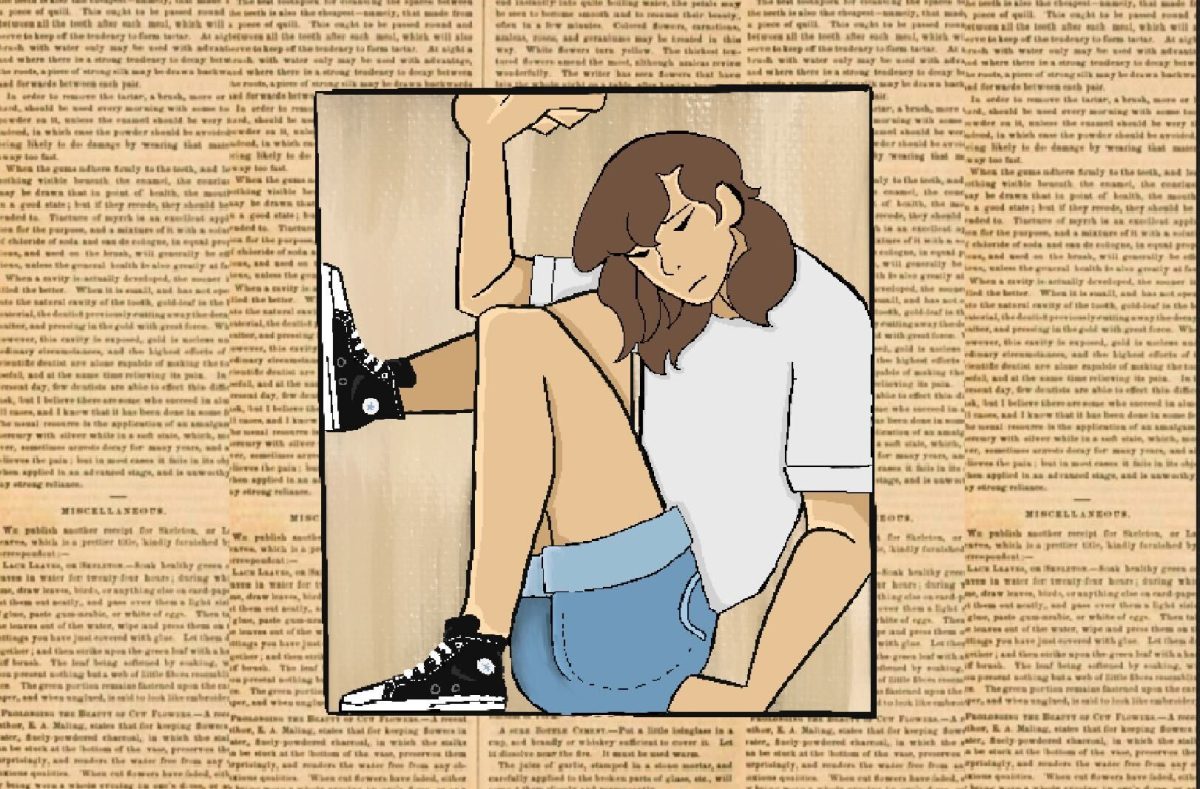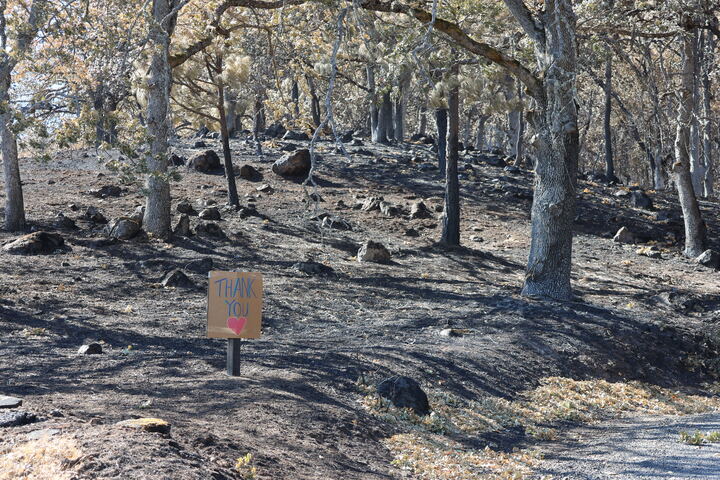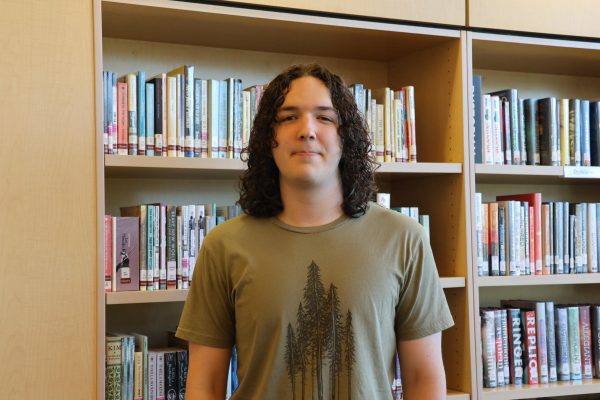Since I was little, I always wanted to take the Amtrak Empire Builder, the train line that runs across the Rockies from Portland. However, when nine other La Salle students and I piled onto it, heading to the Blackfeet Nation, the name seemed rather unfortunate.
That train ride began this year’s Oki-Ni-Soo-Ka-Wa Immersion, lasting from Saturday, Sept. 27, to Saturday, Oct. 4, where the 10 of us — along with science teacher Mr. Ryan Kain and Director of STEAM Ms. Carie Coleman — spent a week working at the La Salle School on the reservation, tutoring students, helping teachers, and doing whatever we could to learn and serve in that tight-knit community.
It was one of the most exhausting, meaningful, and fun weeks of my life.
The school is located in Browning, Montana, a town of about 1,000 people on a reservation of 10,000 that lies in the shadow of Glacier National Park’s jagged peaks — which sit on rightful Blackfeet territory.
We stayed on the Lasallian mission outside of town, living next to the volunteer teachers who make up much of the school’s staff, its little bunkhouses hiding from the desolate plains within the lush valley formed by a river running down from Glacier National Park.
Over the course of my mostly Catholic education, I’ve heard a lot about the importance of breaking bread and sharing food.
But despite eating with my friends at school every day and sharing meals with them at my house and at restaurants, I only really get the weight of that expression — “breaking bread” — now that I have lived with my peers, made food with them, and sat down at a long, linen-covered table to eat with them every day for a week.
After the 18-hour train ride that took us to Montana transitioned right into hours-long Mass and orientation, exhaustion gave us the laughing gas energy of a long plane ride. Then when we finally sat down to eat, laughing, filling the room with burbling conversation, I thought to myself, “Oh. Oh, I get it now. This actually is where I want to be right now.”
Each day we woke up at roughly 6 a.m. to a variety of loud, aptly-themed wake-up songs and piled into a van headed to school. There, we split off into pairs, running through the whole day’s classes with our assigned grade level until the day ended at 4:30 p.m.
But while much of that academic routine was familiar, it was still very different from the haunts I spent most of my childhood playing in.
I remember the recess yard — gravel, dirt, little yellowish cigarette butts scattered among the weeds, and a dilapidated barbed wire fence which had clearly stopped looking intimidating a decade before I arrived.
Even the air, piercingly cold and shrivelingly dry, felt unfamiliar.
What sticks in my mind, though, is the play structure, old steel under chipped paint, placed as if dropped from the sky — alone in the small lot.
But off every edge and bar, there were kids clinging precariously, muffling their laughs and shrieks as one of their number clambered up the steps, keeping her eyes squeezed shut, trying to tag all her classmates as they dangled and juked around its small frame.
What sticks in my mind is those kids acting exactly as I did — the same games, the same laughter, the same mix of adorable, annoying, and uncontrollable.
Growing up as I did in Portland, the evils that not just the Blackfeet Nation but every indigenous community faced daily seemed far away.
It’s not that I have never spent time in and around similar communities or am brimming with ingrained racism or naivete.
It’s just there is nothing like seeing the children at play to reveal our shared humanity, and nothing like being present with our fellow humans to understand the challenges they face.
The next day, I spent a shocking amount of time trying to work with two students on a one-page math worksheet. 45 minutes which, in retrospect, would have felt about the same if I had spent them instead trying to force a rock through a cheese grater.
And I had spent a lot of time with these kids — I loved these kids. I knew that if they believed in themselves and focused on the work, they could totally succeed. So I was getting a bit annoyed, and not really showing it, and on roughly round 20 of attempting to sternly but kindly steering us back on track.
Then one of them, after writing “homecoming” 20 to 30 times on her arm with a marker — it was their homecoming week — looked at her friend and said something along the lines of, “Look, he’s getting so annoyed with me he probably wants to hit me.”
She said it in a joking way — looking to elicit a response, maybe — but it wasn’t joking enough, as if any level of joking could water down such a comment.
One of the first things they drill home in orientation is that kids on reservations have some of the highest Adverse Childhood Experience scores in the nation. Alcoholism, abuse, food and housing insecurity — these things are ever present.
But it was that one comment which suddenly let me see the specter of violence still haunting the windswept Montana plain.
It was within most of our grandparents’ lifetimes that the boarding school on the Blackfeet Reservation was operational, where “kill the Indian, save the man,” was the order of the day.
The fathers and mothers of many of the people we met, if not they themselves, had felt the dehumanizing horror of that program, and its wounds still run deep.
As one of the speakers who presented to us and the community on Orange Shirt Day — a day where people wear orange shirts in remembrance of residential schools in the United States and Canada — said, “Growing up, I didn’t want to be an Indian, I wanted to be like everyone else. Little did I know, everyone else was lost, and didn’t know who they were.”
And even if, in a stunning act of reconciliation, the mission we stayed at was built on the same property as that school, the generational trauma of those genocidal policies and the continuing racism and poverty built by the federal government’s policies are nowhere near healed.
The 12 of us on our one-week trip couldn’t do much to heal those wounds.
But no experience of mine has been more humanizing, or has helped me grow and connect with my peers as much as the Blackfeet Immersion. Nothing has left me in such a state of collapse afterward, feeling the unrelenting crush of my grades weighing on me while only wanting to take time to reflect on my experience and how I can incorporate its lessons into the life ahead of me.
Even if we were just 12 slightly bumbling but well intentioned Oregonians, we were part of a tradition of volunteers and students who cared — who wanted to learn and serve and be expressions of all the best parts of the Lasallian ethos.
Because, on the reservation, we immersion students are not a one-off, as essentially every week of the school year has a group from a different school around the nation.
And that gives me hope. Because I do believe that the healing of not only those wounds, but the combating of all the evils of poverty and colonialism can be furthered by thousands serving and experiencing this and similar communities.


